She entered the subway without a headscarf. What happened next?
At 6:52 a.m., she took the escalator into a metro station in the Iranian capital of Tehran, her short, dark hair uncovered. Roughly 16 minutes later, the girl — identified by authorities and activists as 16-year-old Armita Geravand — was lying, seemingly unconscious, on the subway platform.
These details were gleaned from a patchwork of security camera footage that has been aired by Iran’s state broadcaster and reviewed by NBC News.
The grainy and soundless footage does not appear to be obviously manipulated, and appears to cover much of her time inside the station on Sunday, bar a gap of just under 90 seconds before she reaches the turnstiles.
However, the girl disappears from view during the crucial moment: a four-second period when she actually boards the subway carriage and ends up on the floor.
Human rights activists have called on Iranian authorities to release any security footage from inside the car itself, which a prominent Kurdish rights group has said would show government agents physically assaulting her for allegedly violating the country’s Islamic dress code.
Authorities have denied this, saying that Geravand had no altercation with the morality police, instead fainting and hitting her head after a drop in blood pressure.
A 'public relations crisis'
Most trains in Tehran have multiple security cameras that are viewable by guards, according to The Associated Press, leading government critics to question why it has not released footage from inside the car that would corroborate its side of the story. But Iran’s state-run IRNA news agency interviewed a conductor who said this train, number 134, did not.
“The door opened, three teenage students entered the train and just when they got in, seconds later she lost her balance and fell,” he said.
State media also ran interviews with people identified as Geravand’s parents, and what it said were friends who were with her on the day. They also said there was no encounter with morality police and that she had suddenly fallen.
Human rights groups have frequently accused Iranian authorities of forcing those involved in such incidents to deliver statements under duress.
Hengaw, an Iranian Kurdish rights group based in Norway, said Geravand fell into a coma as a result of injuries it said were inflicted by the morality police. “According to reports obtained by” the group, she was “physically attacked by authorities,” it said Tuesday.
The group also posted a photo that it said showed her in bed at an air force hospital’s intensive care unit. It said authorities had imposed strict security measures around the hospital and her family.
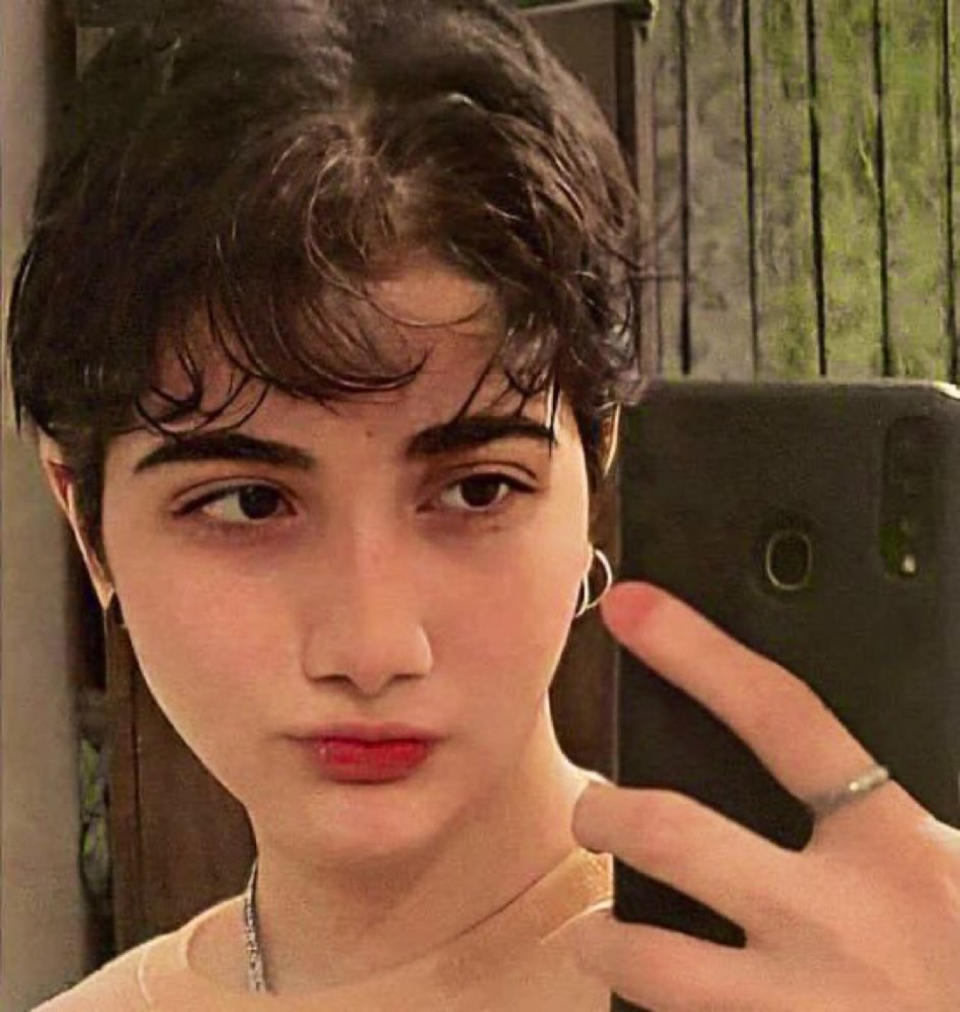
Reuters, citing two unnamed prominent rights activists inside Iran, reported that she was in a coma and that security forces were heavily involved around the hospital.
The case has generated significant attention on social media, echoing that of Mahsa Amini, a 22-year-old Kurdish woman whose death in hospital after being detained by morality police last year sparked mass protests.
Tehran has dismissed the growing global outrage, and accused Western countries that have spoken out, including the United States, of “insincere concern.” It painted the awarding of the Nobel Peace Prize on Friday to jailed Iranian activist Narges Mohammadi as further evidence of Western efforts to stoke tensions.
Nevertheless the Geravand incident is a potential “public relations crisis for the Islamic Republic, which is looking to prevent this becoming a repeat of the Mahsa Amini protests,” said Sanam Vakil, director of the Middle East and North Africa Programme at Chatham House, a London think tank.
What happened on the metro?
NBC News collated and analyzed several bits of footage posted by Iranian state-run media that when stitched together track a large part of Geravand’s progress through the station.
Just after 6:52 a.m. local time Sunday (11:22 p.m. Sunday ET), a person identified by Iran’s state broadcasters as Geravand walks into Meydan-E Shohada, or Martyrs’ Square, Metro station in southern Tehran, the security camera footage shows.
She takes the escalator down toward the platform, and goes through the turnstiles using her metro card, according to the film, some of which is sped-up.
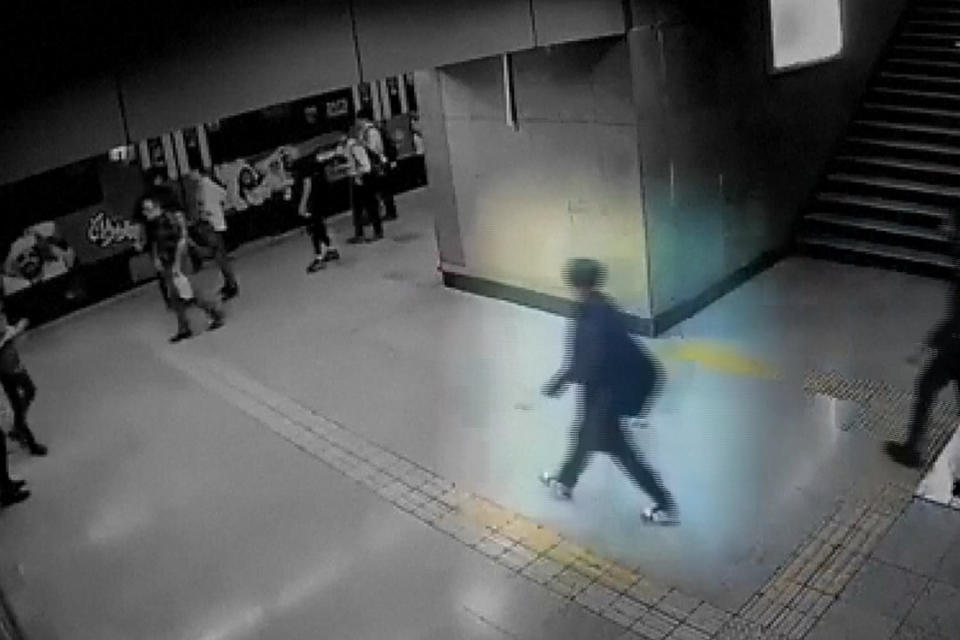
After that, she is seen going into a store and heading to the platform. She waits on the platform as one train arrives and leaves, before boarding the last carriage of the next train.
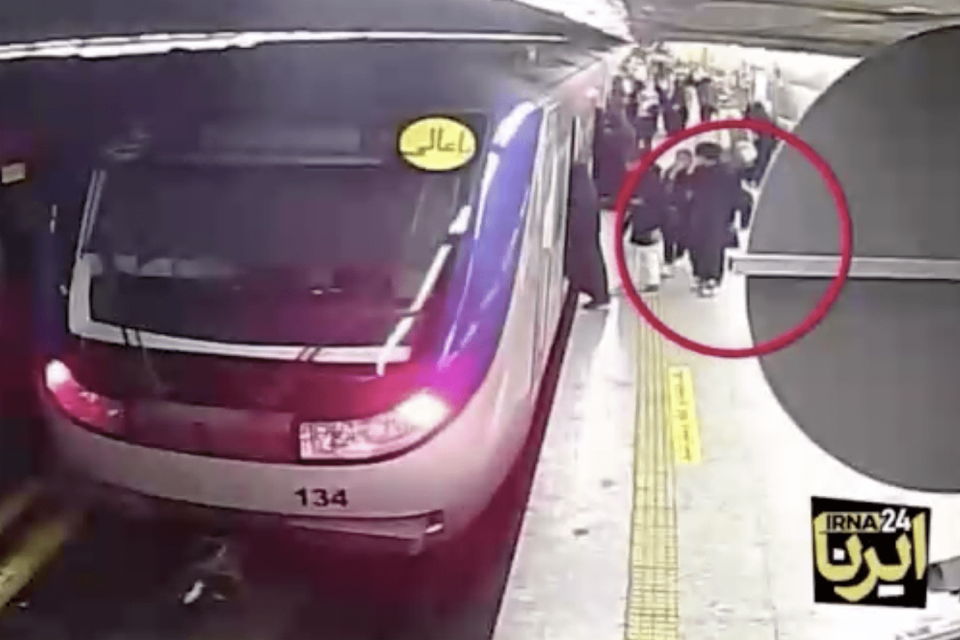
Then four seconds later, at 7:08 a.m., another passenger steps back out of the carriage onto the platform edge, crouching down to seemingly attend to someone who is still inside the train and hidden from view.
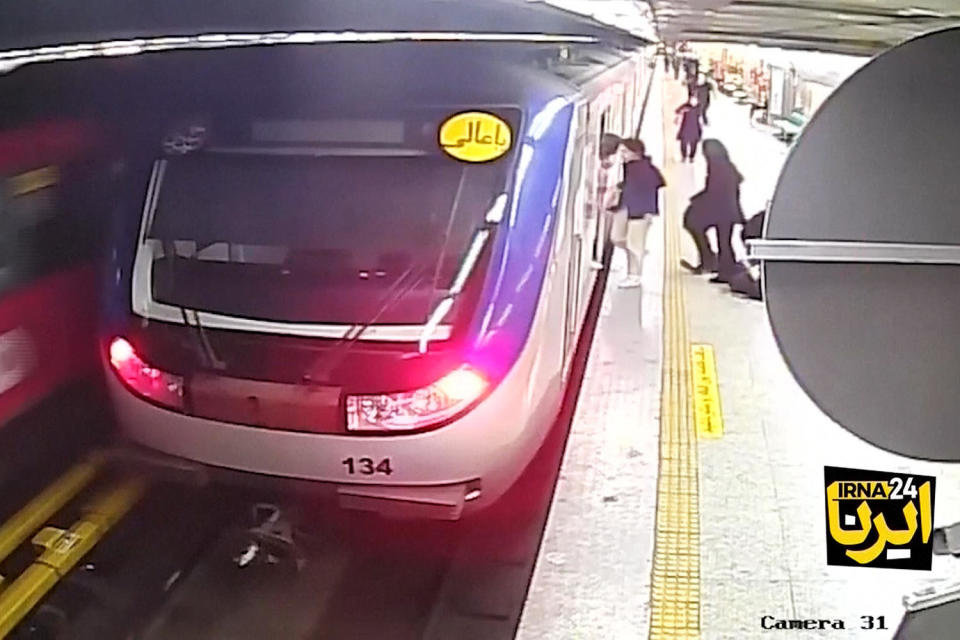
That person, identified by Iranian state-run media as Geravand, is then carried out of the car appearing to be motionless, laid on the platform and surrounded by other people as the train leaves.
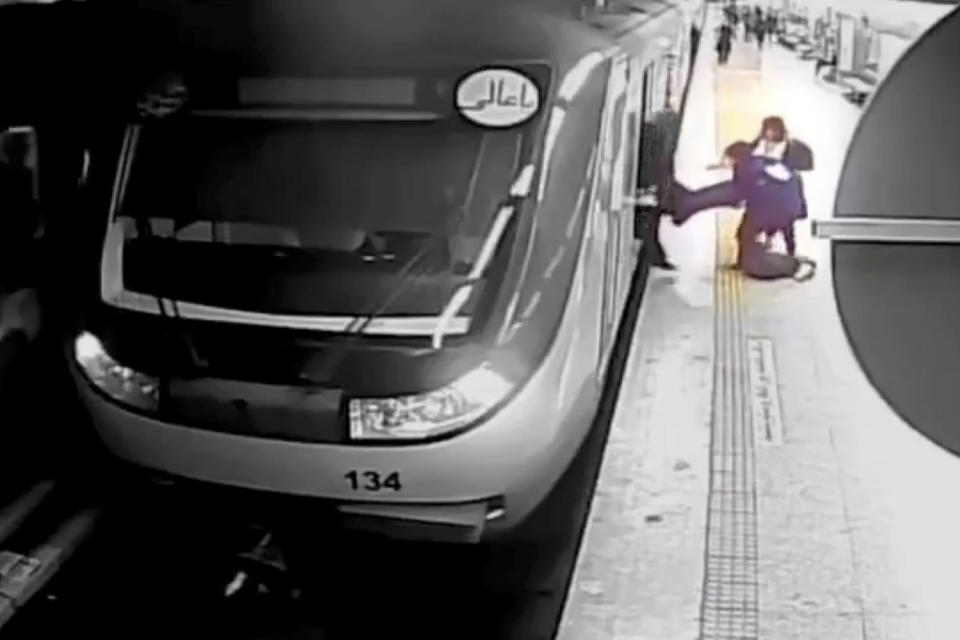
This is where the aired footage ends, timestamped 7:09 a.m.
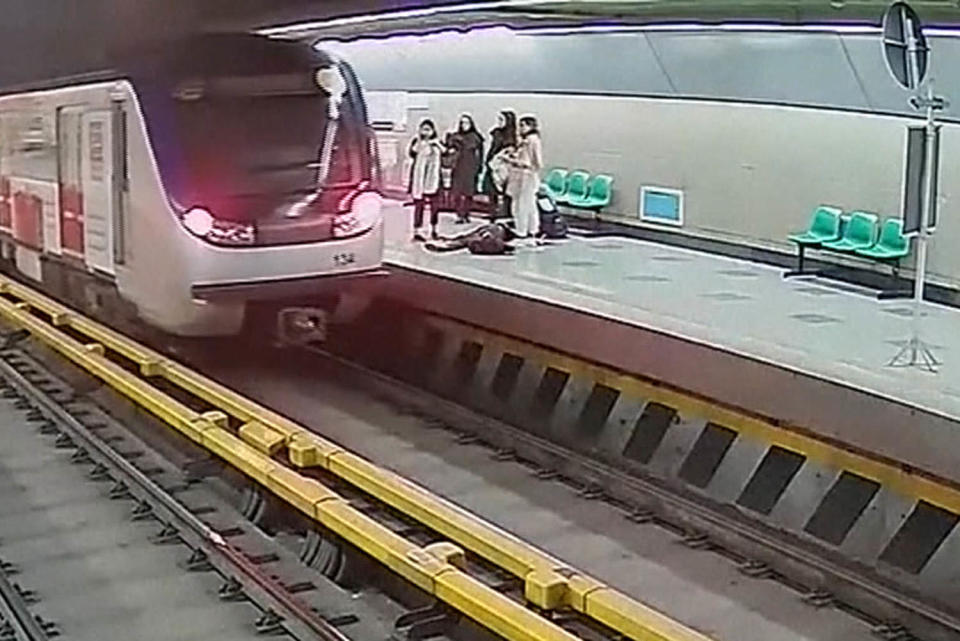
The key gap in the evidence has fueled demands from human rights groups for clarity about what transpired during those four seconds, especially given what’s been happening over the past year in Iran.
After the protests over Amini’s death, many women in urban areas started wearing their hair uncovered in a show of defiance on a level never seen before. At the same time, the government has been “extraordinarily repressive over the past year and cracking down on protests and trying to push people off of the streets,” Vakil at Chatham House said.
Authorities have used “very aggressive means, from surveillance, arrest, torture and execution,” she said, setting up a “tug and pull” tension between the heavy-handed regime and dissenting public.
In recent months authorities have moved to crack down on that visible show of dissent, restoring the morality police to the streets and seeking to reimpose the mandatory hijab laws.
Iran’s parliament last month passed a law that would impose punishments of up to 10 years in prison for women who disobey the rules on headscarves. The bill must be ratified by the Guardian Council, an unelected conservative legislative body.
It’s against that backdrop that Geravand’s hospitalization has emerged to once again fuel angry accusations against the state.
Unhappiness over the headscarf rules are a reflection of a broader dissatisfaction with the government on an array of issues that span politics, economics, society and culture, Vakil said.
“And when you put them together, in a country as large as Iran,” she said, “it creates a tinderbox.”
This article was originally published on NBCNews.com

